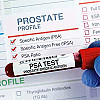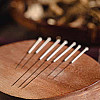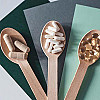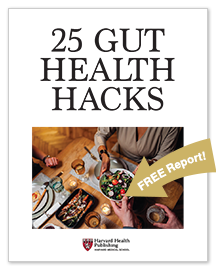9 ways to protect your heart when diabetes threatens it
Diabetes and heart disease often go hand in hand. Here's how you can uncouple them.
Diabetes and heart disease were once thought to be entirely unrelated disorders. New thinking suggests that they may actually spring from the same underlying cause "" chronic, systemwide inflammation "" or at least be influenced by it. This intertwining is a bad thing, since developing diabetes usually means developing heart disease as well. It also has a silver lining: Protecting yourself against one of these chronic conditions works against the other, too.
More than one million Americans are diagnosed with type 2 diabetes each year. Traditionally, up to 80% of people with diabetes develop some form of cardiovascular disease, from heart attack and stroke to peripheral artery disease and heart failure.
The connection between the two diseases isn't ironclad. The American Heart Association and the American Diabetes Association have joined forces to fight both heart disease and diabetes. Their latest effort focuses on helping people with diabetes whose hearts seem healthy keep them that way.
As you scan the table below, notice that almost every recommendation is good for diabetes as well as heart disease. The complete guidelines are available at health.harvard.edu/112.
|
Strategy |
Goal |
Getting there |
|
Know your risk |
Knowledge is power. Calculate your risk of heart disease, or ask your doctor to do it. |
The Framingham calculator is a general heart disease""risk estimator. Specific ones for people with diabetes have been developed by two diabetes groups. All are available online at health.harvard.edu/113. |
|
Exercise |
Aim for at least 150 minutes a week of moderate exercise (like walking) or 90 minutes of vigorous exercise. |
If you do just one thing on this list, choose exercise. It is a key to controlling blood sugar, strengthens the heart and lungs, improves blood pressure, corrects out-of-whack cholesterol, and has other beneficial effects. |
|
Weight |
If your weight is in the healthy range, work to keep it there. If you are overweight, try to lose 5%""7% of your weight over the next 12 months. (That's about a pound a month for someone weighing 200 pounds.) |
Cutting out just one 12-ounce can of sugared soda a day (150 calories) is enough to help you lose a pound a month. You can easily double that by burning more calories with exercise. |
|
Diet |
|
The foods you eat can help you control blood sugar and protect your arteries. The main strategy is to get more fruits, vegetables, beans, whole grains, fish, and vegetable oils (especially olive oil), and less fast food, salty or fried food, and rapidly digested carbohydrates. There is no one-size-fits-all "diabetes diet." The American Diabetes Association released a comprehensive set of nutrition recommendations in January 2007 (get them at health.harvard.edu/113). But rather than trying to wade through these, ask your doctor to refer you to a nutritionist. |
|
Blood pressure |
A healthy blood pressure is 120/80 or below. If you have high blood pressure, aim for a systolic pressure of 130 or lower and a diastolic pressure of 80 or lower. |
Measure your blood pressure often; home monitors are a good investment. If it is above the goal, try exercise, the DASH diet, and, if needed, weight loss, smoking cessation, or medications. |
|
Cholesterol |
Aim for these levels:
|
A healthful diet and exercise can do a lot to reverse risky lipid levels. A cholesterol-lowering statin can help protect against heart attack and stroke even when LDL levels are near the recommended goal. Niacin or a fibrate can improve HDL and triglyceride levels. |
|
Smoking |
If you smoke, try to stop. Avoid secondhand smoke whenever possible. |
The most effective quitting strategy includes talk therapy plus nicotine replacement therapy along with drugs such as bupropion (generic, Wellbutrin, Zyban) or varenicline (Chantix). |
|
Blood sugar control |
Aim for hemoglobin A1c to be under 7% without causing bouts of low blood sugar. |
Managing carbohydrate intake and switching to whole grains can help ease the blood sugar roller coaster. Exercise is vitally important. Use medications such as metformin, thiazolidinediones, and insulin as needed. |
|
Antiplatelet agents |
Take a low-dose aspirin (75""162 milligrams) every day unless your doctor tells you not to. |
Aspirin prevents platelets from latching onto each other, an early step in clot formation. Preventing clots helps prevent heart attack and stroke. |
Disclaimer:
As a service to our readers, Harvard Health Publishing provides access to our library of archived content. Please note the date of last review or update on all articles.
No content on this site, regardless of date, should ever be used as a substitute for direct medical advice from your doctor or other qualified clinician.












